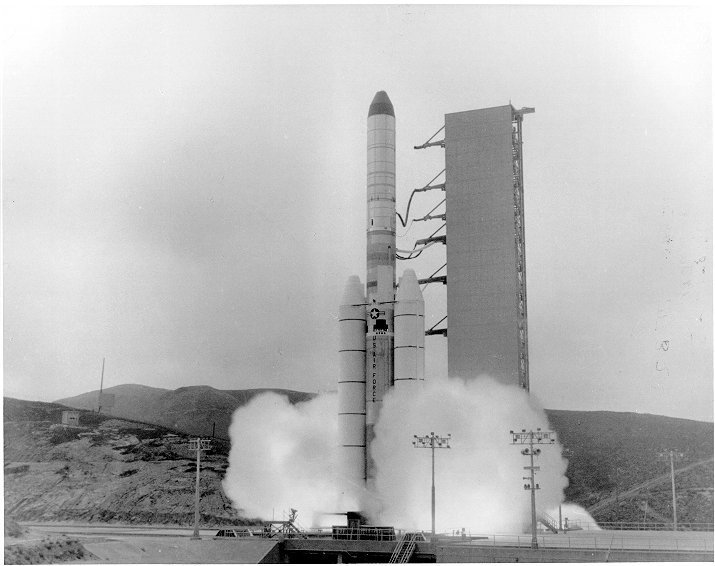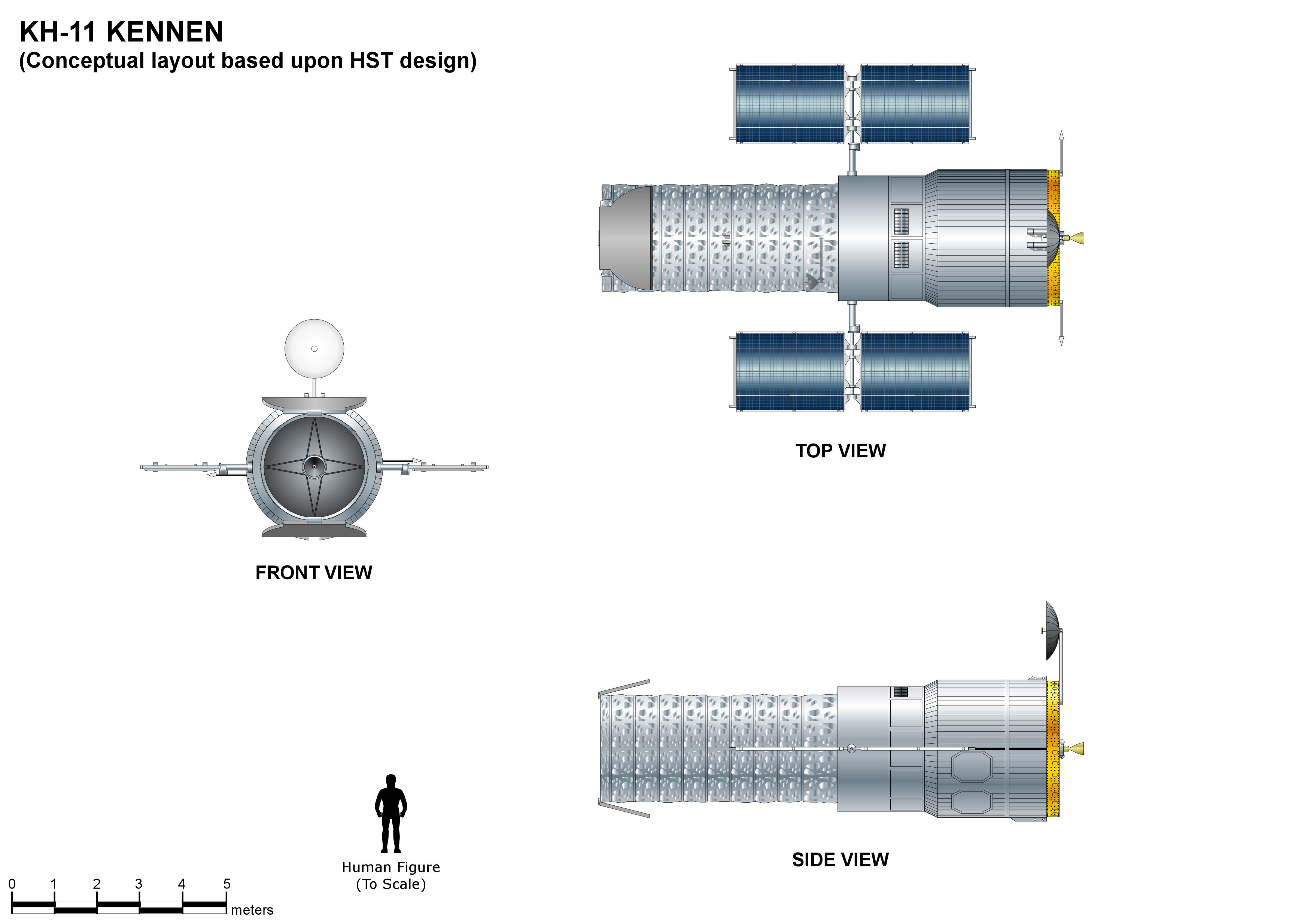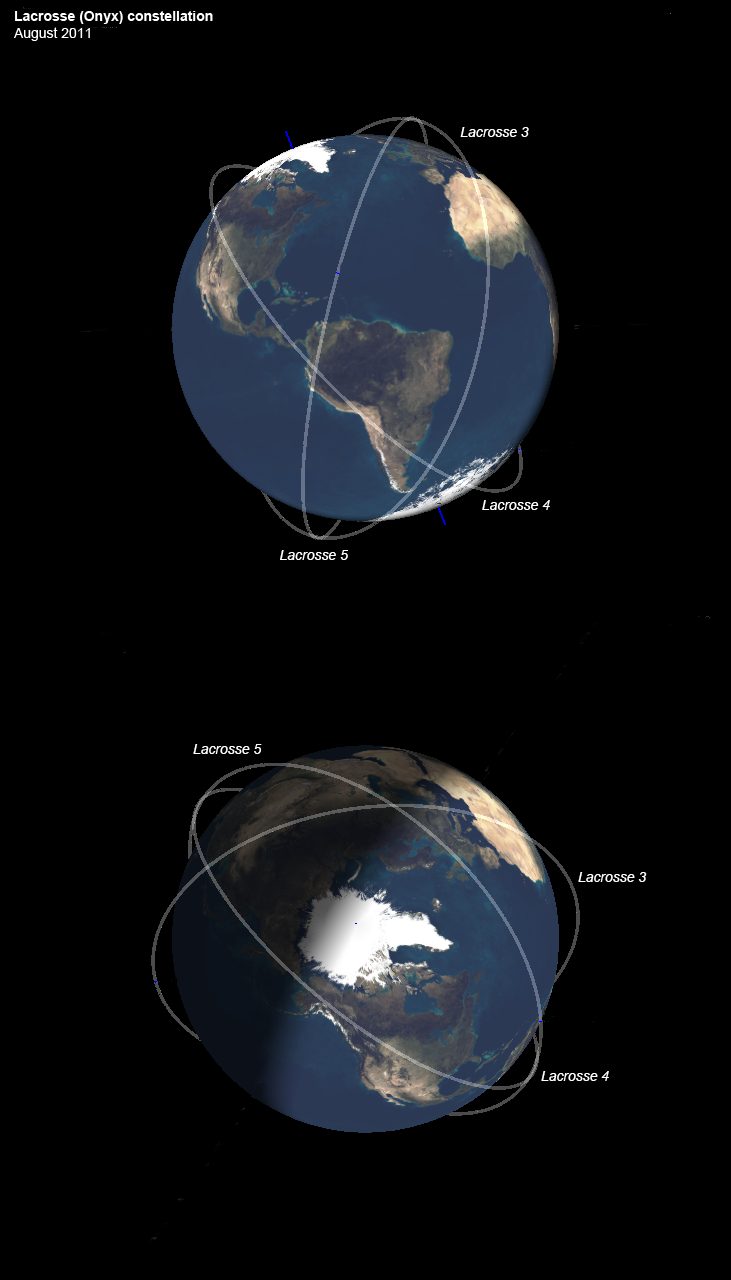|
Landing Zone 4
Space Launch Complex 4 (SLC-4) is a launch and landing site at Vandenberg Space Force Base, California, U.S. It has two pads, both of which are used by SpaceX for Falcon 9, one for launch operations, and other as Landing Zone 4 (LZ-4) for SpaceX landings. The complex was previously used by Atlas and Titan rockets between 1963 and 2005. It consisted of two launch pads, SLC-4W and SLC-4E, which were formerly designated PALC-2-3 and PALC-2-4 respectively. Both pads were built for use by Atlas-Agena rockets, but were later rebuilt to handle Titan rockets. The designation SLC-4 was applied at the time of the conversion to launch Titan launch vehicles. Both pads at Space Launch Complex 4 are currently leased by SpaceX. SLC-4E is leased as a launch site for the Falcon 9 rocket, which first flew from Vandenberg on 29 September 2013, following a 24-month refurbishment program which had started in early 2011. SpaceX began a five-year lease of Launch Complex 4 West in February 2015 ... [...More Info...] [...Related Items...] OR: [Wikipedia] [Google] [Baidu] |
Falcon 9
Falcon 9 is a partially reusable medium lift launch vehicle that can carry cargo and crew into Earth orbit, produced by American aerospace company SpaceX. The rocket has two stages. The first (booster) stage carries the second stage and payload to a certain altitude, after which the second stage lifts the payload to its ultimate destination. The rocket evolved through several versions. V1.0 flew from 2010–2013, V1.1 flew from 2013–2016, while V1.2 Full Thrust first launched in 2015, encompassing the Block 5 variant, flying since May 2018. The booster is capable of landing vertically to facilitate reuse. This feat was first achieved on flight 20 in December 2015. Since then, SpaceX has successfully landed boosters over 100 times. Individual boosters have flown as many as 15 flights. Both stages are powered by SpaceX Merlin engines, using cryogenic liquid oxygen and rocket-grade kerosene (RP-1) as propellants. The heaviest payloads flown to geostationary transfer or ... [...More Info...] [...Related Items...] OR: [Wikipedia] [Google] [Baidu] |
Titan (rocket)
Titan was a family of United States expendable rockets used between 1959 and 2005. The Titan I and Titan II were part of the US Air Force's intercontinental ballistic missile (ICBM) fleet until 1987. The space launch vehicle versions contributed the majority of the 368 Titan launches, including all the Project Gemini crewed flights of the mid-1960s. Titan vehicles were also used to lift US military payloads as well as civilian agency reconnaissance satellites and to send interplanetary scientific probes throughout the Solar System. Titan I missile The HGM-25A Titan I, built by the Martin Company, was the first version of the Titan family of rockets. It began as a backup ICBM project in case the SM-65 Atlas was delayed. It was a two-stage rocket operational from early 1962 to mid-1965 whose LR-87 booster engine was powered by RP-1 (kerosene) and liquid oxygen (LOX). The ground guidance for the Titan was the UNIVAC ATHENA computer, designed by Seymour Cray, based in a harden ... [...More Info...] [...Related Items...] OR: [Wikipedia] [Google] [Baidu] |
Improved Crystal
The KH-11 KENNEN (later renamed CRYSTAL,p.199-200 then Evolved Enhanced CRYSTAL System, and codenamed 1010 and Key Hole) is a type of reconnaissance satellite first launched by the American National Reconnaissance Office (NRO) in December 1976. Manufactured by Lockheed in Sunnyvale, California, the KH-11 was the first American spy satellite to use electro-optical digital imaging, and so offer real-time optical observations. Later KH-11 satellites have been referred to by outside observers as KH-11B or KH-12, and by the names "Advanced KENNEN", "Improved Crystal" and "Ikon". Official budget documents refer to the latest generation of electro-optical satellites as ''Evolved Enhanced CRYSTAL System''. The Key Hole series was officially discontinued in favor of a random numbering scheme after repeated public references to KH-7 GAMBIT, KH-8 GAMBIT 3, KH-9 HEXAGON, and KH-11 KENNEN satellites. The capabilities of the KH-11 are highly classified, as are images they produce. The s ... [...More Info...] [...Related Items...] OR: [Wikipedia] [Google] [Baidu] |
Lacrosse 2
Lacrosse or Onyx is a series of terrestrial radar imaging reconnaissance satellites operated by the United States National Reconnaissance Office (NRO). While not officially confirmed by the NRO or the Government of the United States prior to 2008, there was widespread evidence pointing to its existence, including one NASA website. In July 2008, the NRO itself declassified the existence of its synthetic aperture radar (SAR) satellite constellation. According to former Director of Central Intelligence Admiral Stansfield Turner, Lacrosse had its origins in 1950 (1980?) when a dispute between the Central Intelligence Agency and the U.S. Air Force as to whether a combined optical/radar reconnaissance satellite (the CIA proposal) or a radar-only one (the USAF proposal) should be developed was resolved in favor of the USAF. Lacrosse uses synthetic aperture radar as its prime imaging instrument. It is able to see through cloud cover and also has some ability to penetrate soil, though ... [...More Info...] [...Related Items...] OR: [Wikipedia] [Google] [Baidu] |
Final Titan IV Launch
Final, Finals or The Final may refer to: *Final (competition), the last or championship round of a sporting competition, match, game, or other contest which decides a winner for an event ** Another term for playoffs, describing a sequence of contests taking place after a regular season or round-robin tournament, culminating in a final by the first definition. *final (Java), a keyword in the Java programming language *Final case, a grammatical case *Final examination or finals, a test given at the end of a course of study or training *Part of a syllable *Final, a tone of the Gregorian mode Art and entertainment * ''Final'' (film), a science fiction film * ''The Final'' (film), a thriller film * ''Finals'' (film), a 2019 Malayalam sports drama film *Final (band), an English electronic musical group * ''Final'' (Vol. 1), album by Enrique Iglesias * ''The Final'' (album), by Wham! *"The Final", a song by Dir en grey on the album ''Withering to Death'' * ''Finals'' (comics), a four-is ... [...More Info...] [...Related Items...] OR: [Wikipedia] [Google] [Baidu] |
The New York Times
''The New York Times'' (''the Times'', ''NYT'', or the Gray Lady) is a daily newspaper based in New York City with a worldwide readership reported in 2020 to comprise a declining 840,000 paid print subscribers, and a growing 6 million paid digital subscribers. It also is a producer of popular podcasts such as '' The Daily''. Founded in 1851 by Henry Jarvis Raymond and George Jones, it was initially published by Raymond, Jones & Company. The ''Times'' has won 132 Pulitzer Prizes, the most of any newspaper, and has long been regarded as a national " newspaper of record". For print it is ranked 18th in the world by circulation and 3rd in the U.S. The paper is owned by the New York Times Company, which is publicly traded. It has been governed by the Sulzberger family since 1896, through a dual-class share structure after its shares became publicly traded. A. G. Sulzberger, the paper's publisher and the company's chairman, is the fifth generation of the family to head the pa ... [...More Info...] [...Related Items...] OR: [Wikipedia] [Google] [Baidu] |
KH-11 Kennan
The KH-11 KENNEN (later renamed CRYSTAL,p.199-200 then Evolved Enhanced CRYSTAL System, and codenamed 1010 and Key Hole) is a type of reconnaissance satellite first launched by the American National Reconnaissance Office (NRO) in December 1976. Manufactured by Lockheed in Sunnyvale, California, the KH-11 was the first American spy satellite to use electro-optical digital imaging, and so offer real-time optical observations. Later KH-11 satellites have been referred to by outside observers as KH-11B or KH-12, and by the names "Advanced KENNEN", "Improved Crystal" and "Ikon". Official budget documents refer to the latest generation of electro-optical satellites as ''Evolved Enhanced CRYSTAL System''. The Key Hole series was officially discontinued in favor of a random numbering scheme after repeated public references to KH-7 GAMBIT, KH-8 GAMBIT 3, KH-9 HEXAGON, and KH-11 KENNEN satellites. The capabilities of the KH-11 are highly classified, as are images they produce. The s ... [...More Info...] [...Related Items...] OR: [Wikipedia] [Google] [Baidu] |
KH-9 Hexagon
KH-9 ( BYEMAN codename HEXAGON), commonly known as Big Bird or KeyHole-9, p.32 Big Bird was a series of photographic reconnaissance satellites launched by the United States between 1971 and 1986. Of twenty launch attempts by the National Reconnaissance Office, all but one were successful. Photographic film aboard the KH-9 was sent back to Earth in recoverable film return capsules for processing and interpretation. The highest ground resolution achieved by the main cameras of the satellite was . Another source says "images in the "better-than-one-foot" category" for the last "Gambit" missions. They are also officially known as the Broad Coverage Photo Reconnaissance satellites (Code 467), built by Lockheed Corporation for the National Reconnaissance Office (NRO). The satellites were an important factor in determining Soviet military capabilities and in the acquisition of accurate intelligence for the formulation of U.S. national policy decisions as well as deployment of U.S. f ... [...More Info...] [...Related Items...] OR: [Wikipedia] [Google] [Baidu] |
Titan (rocket Family)
Titan was a family of United States expendable rockets used between 1959 and 2005. The Titan I and Titan II were part of the US Air Force's intercontinental ballistic missile (ICBM) fleet until 1987. The space launch vehicle versions contributed the majority of the 368 Titan launches, including all the Project Gemini crewed flights of the mid-1960s. Titan vehicles were also used to lift US military payloads as well as civilian agency reconnaissance satellites and to send interplanetary scientific probes throughout the Solar System. Titan I missile The HGM-25A Titan I, built by the Martin Company, was the first version of the Titan family of rockets. It began as a backup ICBM project in case the SM-65 Atlas was delayed. It was a two-stage rocket operational from early 1962 to mid-1965 whose LR-87 booster engine was powered by RP-1 (kerosene) and liquid oxygen (LOX). The ground guidance for the Titan was the UNIVAC ATHENA computer, designed by Seymour Cray, based in a harden ... [...More Info...] [...Related Items...] OR: [Wikipedia] [Google] [Baidu] |
Martin Marietta
The Martin Marietta Corporation was an American company founded in 1961 through the merger of Glenn L. Martin Company and American-Marietta Corporation. In 1995, it merged with Lockheed Corporation to form Lockheed Martin. History Martin Marietta formed in 1961 by the merger of the Glenn L. Martin Company and American-Marietta Corporation. Martin, based in Baltimore, was primarily an aerospace concern with a recent focus on missiles, namely its Titan program. American-Marietta was headquartered in Chicago and produced paints, dyes, metallurgical products, construction materials, and other goods. In 1982, Martin Marietta was subject to a hostile takeover bid by the Bendix Corporation, headed by William Agee. Bendix bought the majority of Martin Marietta shares and in effect owned the company. However, Martin Marietta's management used the short time separating ownership and control to sell non-core businesses and launch its own hostile takeover of Bendix (known as the Pac-Ma ... [...More Info...] [...Related Items...] OR: [Wikipedia] [Google] [Baidu] |
Titan IIID Rocket
Titan most often refers to: * Titan (moon), the largest moon of Saturn * Titans, a race of deities in Greek mythology Titan or Titans may also refer to: Arts and entertainment Fictional entities Fictional locations * Titan in fiction, fictionalized depictions of the moon of Saturn * Titan (Marvel Comics location), a moon ** Titan (Marvel Cinematic Universe), its Marvel Cinematic Universe counterpart * Titan, a moon in the list of locations of the DC Universe * Titan, a ''Fighting Fantasy'' gamebooks world Fictional characters * Titan (Dark Horse Comics), a superhero * Titan (Imperial Guard), a Marvel Comics superhero * Titan (New Gods), from DC Comics' ''Darkseid's Elite'' * Titan, in the Infershia Pantheon * Titan, in ''Megamind'' * Titan, in ''Sym-Bionic Titan'' * King Titan, on ''Stingray'' (1964 TV series) Fictional species and groups * Titan (''Dune'') * Titan (''Dungeons & Dragons'') * Teen Titans, a DC superhero team * Titan Legions, units in the tabletop game '' E ... [...More Info...] [...Related Items...] OR: [Wikipedia] [Google] [Baidu] |
SpaceX Reusable Rocket
SpaceX is privately funding the development of orbital launch systems that can be reused many times, in a manner similar to the reusability of aircraft. SpaceX has been developing the technologies over several years to facilitate full and rapid reusability of space launch vehicles. The project's long-term objectives include returning a launch vehicle first stage to the launch site in minutes and to return a second stage to the launch pad following orbital realignment with the launch site and atmospheric reentry in up to 24 hours. SpaceX's long term goal is that both stages of their orbital launch vehicle will be designed to allow reuse a few hours after return. The program was publicly announced in 2011. SpaceX first achieved a successful landing and recovery of a first stage in December 2015. The first re-flight of a landed first stage occurred in March 2017 with the second occurring in June 2017, that one only five months after the maiden flight of the booster. The thi ... [...More Info...] [...Related Items...] OR: [Wikipedia] [Google] [Baidu] |




.png)


